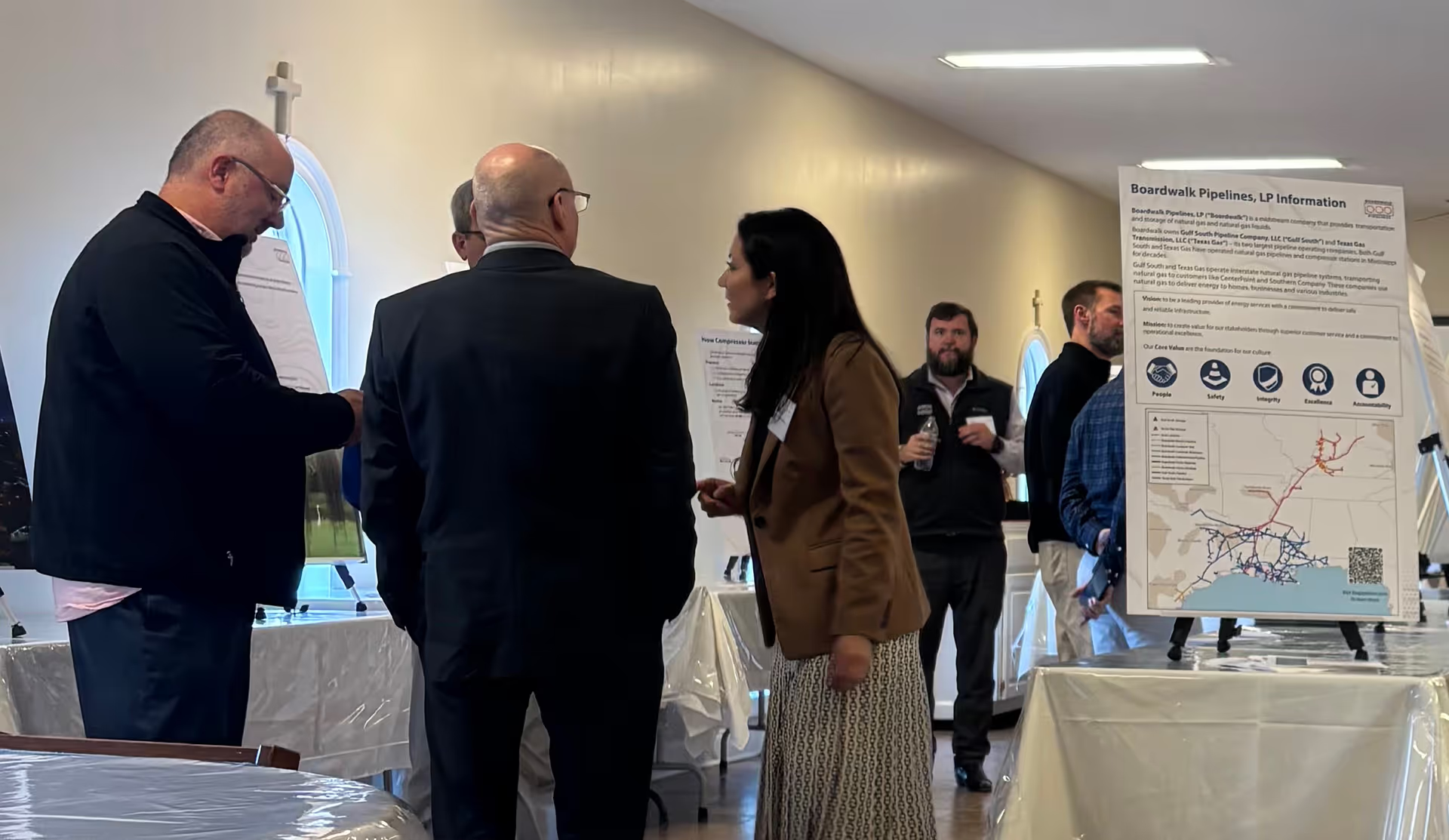Supporting local communities
Communicating with stakeholders

Strong relationships with our landowners and community members are essential to how we operate. Successful community engagement begins with seeking input, building trust and creating opportunities for collaboration. We know our projects cross land that people live on, work on and care deeply about. That is why we seek to treat our neighbors as partners, and we are committed to listening, responding and being transparent about how our projects may affect their lives, land and futures.
Our Public Participation Plan provides consultation guidelines to identify stakeholders, establish transparency, address stakeholder and environmental considerations and support the permitting processes. We use a formal set of actions and communication tools within our Public Participation Plan to identify and involve landowners, communities, public officials and community leaders, agencies and other interested parties potentially affected by our operations.
We consider environmental justice considerations and look for opportunities to work with stakeholders to understand our role in resolving them. Our Community Engagement Plan, a part of our Public Participation Plan, provides consultation guidelines and tools to identify community stakeholders, including environmental justice communities, conisder their needs and explore opportunities to work with them. This includes identifying affected community members and improving outreach and dialogue with those in our operating areas who may be underrepresented, disadvantaged or subject to a disproportionate burden of impacts that could arise during the construction or operation of a project. We utilize current guidance and tools provided by the EPA and the FERC, if applicable, to identify these communities and stakeholders.
We value stakeholder and community engagement in our operations and project planning. We involve stakeholders early in the route and location selection process, request survey permission from affected landowners and periodically update stakeholders concerning ongoing projects. We are committed to fostering open and meaningful dialogue that provides opportunities for participation. Our project teams provide landowners and stakeholders with project notification packages describing a project’s scope, location, timing and ways to get involved in related state or FERC proceedings. Stakeholders are kept informed and become part of the process through letters, website updates, in-person meetings, email, direct and virtual communications, and, for major projects, community open houses during the project development process.
Open houses are held in areas convenient to the affected community, allowing residents to engage with the project team. At these meetings, we provide information on project schedules and community impacts, including the specific route or location of the project, how long project construction is expected to last and what the community may experience during various phases of the project.
Our website also contains contact information for local offices, including who to contact in a pipeline emergency. It also provides a way for stakeholders to send us a message detailing their questions or concerns in order to facilitate two-way communication. We develop project-specific websites and hotlines as needed. We maintain these resources and seek to respond to inquiries, including those from landowners, via phone, email or in person.
Partnering with Communities
Our Partnering with Communities program reflects our commitment to making a positive impact in the communities where we live and work. Our program supports our communities through ongoing partnerships, volunteerism and corporate giving.
Mobilizing outreach
In 2025, we set a goal for every employee to volunteer for at least four hours of their time in our local communities. Our Week of Caring in April kicked off this initiative with organized community events across our footprint.
Nearly half of our workforce participated, contributing more than 3,000 volunteer hours in a single week. From assembling care kits and mentoring students to supporting local food banks and greenspace cleanups, employees showed up with enthusiasm and purpose, demonstrating the power of collective impact when our people come together in service. Our Philanthropy team has additional volunteer opportunities planned for employees throughout the remainder of the year.
Employees receive two paid volunteer days per year to participate in company-sponsored events. We also match employee donations to charities of their choosing. In 2024, we supported more than 320 community organizations across our footprint.
Learn more about our Partnering with Communities program.
